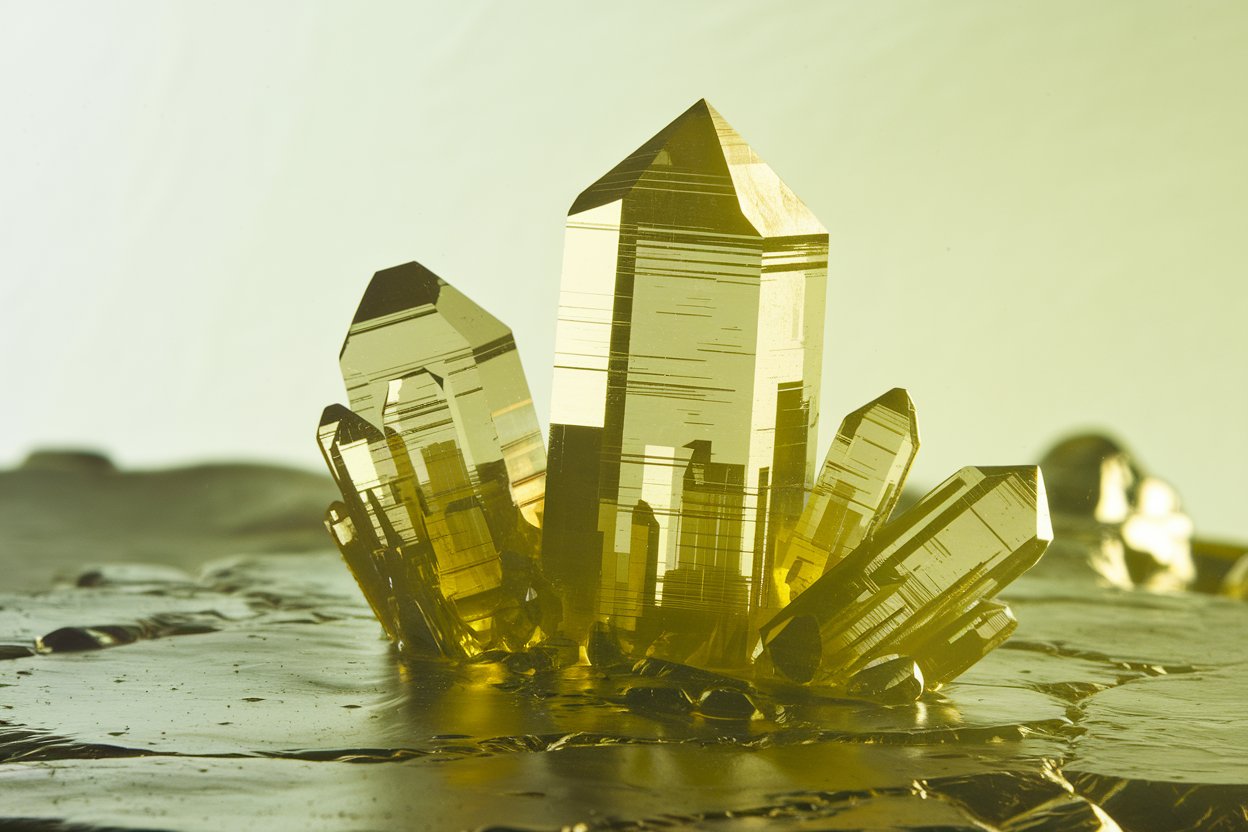
What is Indium(I) Bromide? Indium(I) Bromide, also known as InBr, is a chemical compound made up of indium and bromine. This compound is part of the halide family, which includes other elements like chlorine and iodine. Indium(I) Bromide appears as a yellow crystalline solid and is often used in chemical research and various industrial applications. It has unique properties that make it useful in the synthesis of organic compounds and as a catalyst in certain reactions. Understanding Indium(I) Bromide can provide insights into its practical uses and the science behind its formation. Let's dive into 25 fascinating facts about this intriguing compound!
Key Takeaways:
- Indium(I) Bromide: A Versatile Compound Indium(I) bromide, with its yellow-brown appearance and solubility in water, is used in catalysts, semiconductors, and even photovoltaic cells. It's crucial in various industries and nanotechnology.
- Safety First with Indium(I) Bromide Handling indium(I) bromide requires protective gear and proper storage to prevent toxicity and environmental harm. Its unique properties make it valuable, but safety measures are essential.
What is Indium(I) Bromide?
Indium(I) bromide, also known as indium monobromide, is a chemical compound with the formula InBr. It is a fascinating substance with unique properties and applications. Let's dive into some intriguing facts about this compound.
Chemical Properties of Indium(I) Bromide
Understanding the chemical properties of indium(I) bromide helps in grasping its behavior and uses in various fields.
- Formula: The chemical formula for indium(I) bromide is InBr.
- Molecular Weight: It has a molecular weight of approximately 193.72 g/mol.
- Appearance: Indium(I) bromide typically appears as a yellow or brown crystalline solid.
- Melting Point: It has a melting point of around 285°C (545°F).
- Boiling Point: The boiling point of indium(I) bromide is approximately 656°C (1213°F).
- Solubility: Indium(I) bromide is soluble in water, forming a colorless solution.
- Crystal Structure: It crystallizes in a tetragonal structure, which is a type of crystal system.
Uses of Indium(I) Bromide
Indium(I) bromide finds applications in various industries due to its unique properties.
- Catalyst: It is used as a catalyst in organic synthesis, particularly in the formation of carbon-carbon bonds.
- Semiconductors: Indium(I) bromide is used in the production of semiconductors, which are essential components in electronic devices.
- Photovoltaics: It plays a role in the development of photovoltaic cells, which convert sunlight into electricity.
- Chemical Reagent: It serves as a reagent in chemical reactions, aiding in the synthesis of other compounds.
- Nanotechnology: Indium(I) bromide is utilized in nanotechnology for creating nanostructures and nanomaterials.
Safety and Handling
Safety is paramount when dealing with chemical compounds. Here are some important safety facts about indium(I) bromide.
- Toxicity: Indium(I) bromide can be toxic if ingested or inhaled, so proper safety measures should be taken.
- Protective Gear: When handling indium(I) bromide, wearing protective gear such as gloves and goggles is recommended.
- Storage: It should be stored in a cool, dry place, away from incompatible substances like strong acids and bases.
- Disposal: Disposal of indium(I) bromide should follow local environmental regulations to prevent contamination.
Interesting Facts
Here are some lesser-known yet fascinating facts about indium(I) bromide.
- Discovery: Indium was discovered in 1863 by Ferdinand Reich and Hieronymous Theodor Richter, and indium(I) bromide was synthesized later.
- Name Origin: The name "indium" comes from the indigo blue line in its spectrum.
- Rare Element: Indium is a rare element, making up about 0.21 parts per million of the Earth's crust.
- Soft Metal: Indium is a very soft metal, and it can be cut with a knife.
- Alloys: Indium is often used in alloys to lower the melting point of other metals.
- Non-toxic Alternative: Indium compounds are sometimes used as non-toxic alternatives to more hazardous materials in certain applications.
- Conductivity: Indium(I) bromide has good electrical conductivity, which is why it is used in electronics.
- Research: Ongoing research is exploring new applications for indium(I) bromide in various scientific fields.
- Environmental Impact: While indium itself is not highly toxic, its compounds, including indium(I) bromide, must be handled carefully to avoid environmental harm.
Indium(I) Bromide: A Quick Recap
Indium(I) bromide, a fascinating compound, has unique properties making it valuable in various fields. Its chemical formula is InBr, and it’s known for its crystalline structure. This compound plays a significant role in semiconductor technology and organic synthesis. It’s also used in catalysis and material science due to its reactivity and stability.
Understanding these 25 facts about indium(I) bromide gives a clearer picture of its importance and applications. From its melting point to its electrical conductivity, each fact highlights why this compound is a subject of interest for scientists and researchers.
Whether you’re a student, a professional, or just curious, knowing these facts can deepen your appreciation for the wonders of chemistry. Keep exploring and learning—there’s always more to discover in the world of science!
Frequently Asked Questions
Was this page helpful?
Our commitment to delivering trustworthy and engaging content is at the heart of what we do. Each fact on our site is contributed by real users like you, bringing a wealth of diverse insights and information. To ensure the highest standards of accuracy and reliability, our dedicated editors meticulously review each submission. This process guarantees that the facts we share are not only fascinating but also credible. Trust in our commitment to quality and authenticity as you explore and learn with us.
